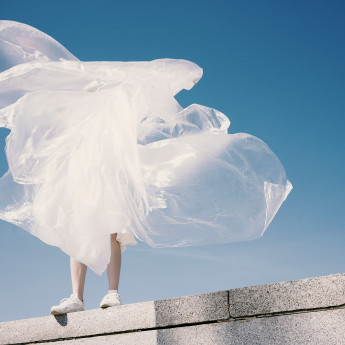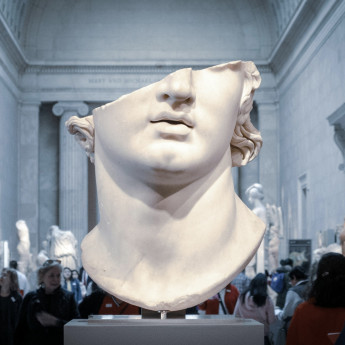
Details
Artist
Styles
Serigraph with Gold Foil on Paper // Louise Nevelson's Bicentennial Dawn, created in 1976, is a limited edition serigraph with gold foil that captures the artist’s signature style of intricate geometric forms and architectural depth. The composition features a series of abstract, sculptural structures that rise like towering monuments, highlighted by bold contrasts and rich black tones. The inclusion of gold foil adds a reflective quality, enhancing the sense of grandeur and mystique that Nevelson evokes. The play between light and shadow creates a dynamic, three-dimensional effect, drawing the viewer into the depth and complexity of the work. The serigraph's size (88.3 cm × 63.5 cm) commands attention, reflecting Nevelson's sculptural expertise and her ability to translate it into print.
Bicentennial Dawn, 1976
form
Medium
Size
88.3 x 63.5 cm
- Inches
- Centimeters
Edition
Price
- USD
- EUR
- GBP
Details
Artist
Styles
Serigraph with Gold Foil on Paper // Louise Nevelson's Bicentennial Dawn, created in 1976, is a limited edition serigraph with gold foil that captures the artist’s signature style of intricate geometric forms and architectural depth. The composition features a series of abstract, sculptural structures that rise like towering monuments, highlighted by bold contrasts and rich black tones. The inclusion of gold foil adds a reflective quality, enhancing the sense of grandeur and mystique that Nevelson evokes. The play between light and shadow creates a dynamic, three-dimensional effect, drawing the viewer into the depth and complexity of the work. The serigraph's size (88.3 cm × 63.5 cm) commands attention, reflecting Nevelson's sculptural expertise and her ability to translate it into print.
- Recently Added
- Price (low-high )
- Price (high-low )
- Year (low-high )
- Year (high-low )
What is Found Object?
A found object is a term used to describe a man-made or natural object, or a fragment of one, that an artist discovers or purchases and keeps for inspiration or as a work of art. The artist may also modify the object or incorporate it into a collage or assemblage, transforming it into a new piece of art.


















